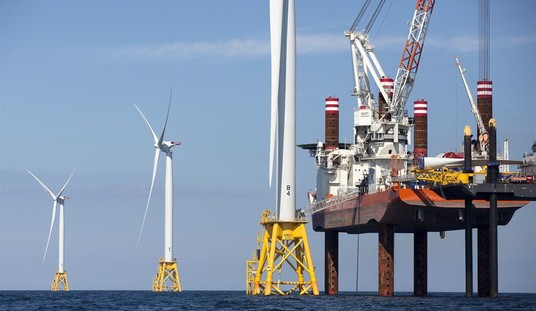So much for being “on hold.” The merry little trade war with China appears to be back on, as the White House announced tariffs on a broad range of imports. This time, the Trump administration has targeted industries where Beijing’s attacks on intellectual property skew the markets the most:
President Trump said Tuesday that he would proceed with tariffs on $50 billion in Chinese imports and introduce new limits on Chinese investment in U.S. high-tech industries as part of a broad campaign to crack down on Chinese acquisition of U.S. technology.
The moves come less than 10 days after Treasury Secretary Steven Mnuchin said that the trade war with China was “on hold.” Commerce Secretary Wilbur Ross is due to arrive in Beijing on Saturday for talks aimed at cooling trade tensions between the two countries.
The move signals a move back to offense on China’s CM2025 project. Over the last two weeks, it appeared that the Trump administration had retreated from their aggressive policies to contain China’s economic expansion in this effort. At the center of that impression was Donald Trump’s suddenly conciliatory rhetoric on ZTE, the Chinese telecom that had flouted US sanctions, which prompted members of Congress in both parties to demand answers from the White House:
The announced measures also come amid bipartisan criticism of the president’s softening of penalties for ZTE, a Chinese telecom company that had traded with Iran and North Korea in defiance of U.S. sanctions. …
Tariffs of 25 percent will be applied to Chinese imports containing important technologies, including those related to Beijing’s Made-in-China 2025 development program, the White House said. The final tariff list will be made public by June 15 with the new import taxes taking effect shortly thereafter.
The CM2025 project directly threatens US intellectual property rights, a conclusion that the US Trade Representative Office reached two months ago. It was one of the justifications the Trump administration used to propose tariffs at the time. China threatened to retaliate in kind, leading to fears of a broad trade war. However, two weeks ago Treasury Secretary Steve Mnuchin raised hopes of a settlement by calling the tariffs “on hold,” and rumors of a negotiating breakthrough followed soon afterward:
But there had been some hope among free traders and the anti-tariff camp that the stiffer tariffs would ever ultimately go into effect after the two countries launched a trade dialogue earlier this month in Beijing. After Trump administration officials traveled to China at the start of the month, a Chinese delegation came to Washington two weeks later.
After that meeting, the two sides announced that Beijing would buy significantly more U.S. agricultural and energy products in a bid to reduce the bilateral trade deficit, and they said they established a framework for addressing technology trade irritants.
So what happened? It’s tough to say, but Beijing’s ministry of commerce says the moved surprised them:
“We are surprised by the strategic statement released by the White House, but, at the same time, it is somewhat expected,” the statement said. “It is obviously against the consensus reached by the US and China in Washington recently.” …
“No matter what the actions that the US plans to take, China has the confidence, the capability and the experience to defend the core interests of the people and the nation,” the statement said.
Wilbur Ross is scheduled to go to Beijing this weekend to continue negotiations, making his position a bit awkward, to say the least. Even more awkwardly, Trump recently told Ross that he’s “past his prime” and that his trade deals have been “no good”:
Investor Wilbur Ross was brought into the administration as one of President Donald Trump’s “killers” — but in recent months, the commerce secretary has been increasingly marginalized, with his agency widely seen in the White House as a mess.
Trump himself has lashed out at Ross in Oval Office meetings, telling the man who once helped bail him out in Atlantic City that he’s “past his prime” and “no longer a killer” and trying to bench him from making trade deals, according to three people familiar with the comments. Despite being one of the administration’s leading protectionist voices early on, Ross was initially left off a May trade delegation to China led by Treasury Secretary Steven Mnuchin. …
“The fact that he is going over to China is a signal that the president has some confidence in him. He likes Ross even if he does not consider him a killer,” said one former administration official. “But it’s also a signal that they are not expecting a whole lot. You would not send him if you were expecting real progress.”
In a weird way, though, Ross may have an edge in these negotiations. Politico’s profile notes that Ross, who was brought in as a trade hardliner, has been eclipsed by USTRO Robert Lighthizer, who wrote the damning report on China’s intellectual property theft in March. China might want to help Ross cut a deal as a way to keep Lighthizer off the field. However, the big risk is that Beijing won’t have any confidence in Ross to make a deal that Trump will accept. Ross will have less than two weeks to solve the knotty issue of trade before the tariffs get officially imposed, so there’s not much room for error.








Join the conversation as a VIP Member